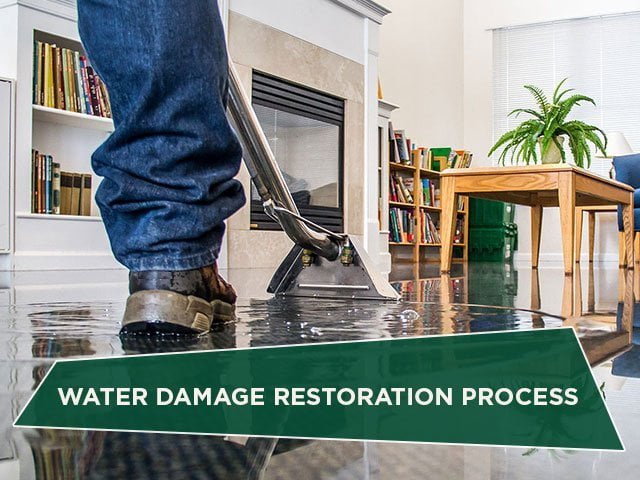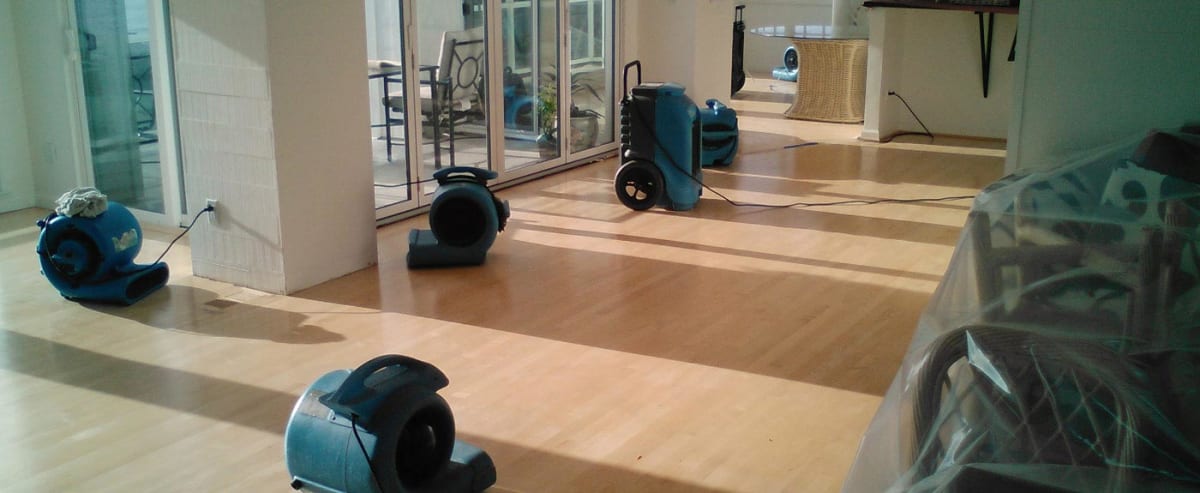Water damage restoration insights from industry experts
Wiki Article
Everything About Water Damages Restoration: Key Facts and Benefits You Should Know
Water damages restoration is an essential procedure that every property owner must recognize. It involves assessing the sort of damages, whether clean, grey, or black water, and performing an organized reconstruction method. Acknowledging the signs of water damage early can significantly affect the efficiency of the repair. Recognizing the steps involved and the relevance of timely activity can protect against more complications. What aspects should house owners think about when making a decision in between expert services and DIY methods?Comprehending Water Damages: Kinds and Triggers
What factors add to water damages, and exactly how can they be identified? Water damages can be categorized into three primary classifications: clean water, gray water, and black water. Tidy water originates from resources like broken pipes or rain, presenting minimal wellness risks. Gray water, which might come from devices like dish washers or cleaning makers, has contaminants that call for cautious handling. Black water, coming from sewer or flooding, presents major health and wellness dangers and needs instant interest.The root causes of water damage vary. Usual elements include pipes failings, roofing leaks, all-natural disasters, and bad drainage systems. Furthermore, human errors, such as leaving faucets stopping working or running to preserve home appliances, can exacerbate the trouble. Comprehending these types and causes is important for effective avoidance and removal methods, ensuring that homeowner can take aggressive procedures to protect their homes versus the destructive effects of water damages.
Indicators of Water Damage: Exactly How to Identify Issues Early
How can one discover the early indicators of water damage before it escalates right into a much more severe trouble? Identifying these concerns quickly can conserve property owners from substantial repair work. Typical indications consist of noticeable water stains on wall surfaces or ceilings, which often appear as yellowish or brown patches. Another indicator is bubbling or peeling paint and wallpaper, recommending dampness underneath the surface. Moldy odors can likewise symbolize hidden mold growth, a straight outcome of long term dampness. Additionally, warping or fastening of floors may indicate excess moisture in the underlying frameworks. Homeowners ought to frequently check areas susceptible to water exposure, such as kitchen areas, basements, and restrooms, for any type of indications of leakage or moisture. An unexpected boost in utility bills might hint at unnoticed leakages. By acknowledging these early signs, individuals can take aggressive actions to attend to water damages before it intensifies.The Water Damages Repair Refine: Step-by-Step

Next off, the drying process begins, making use of air moving companies and dehumidifiers to remove moisture from walls, floorings, and individual valuables. After the location is thoroughly dried, cleansing and sanitization take area to eliminate contaminants and smells.
Finally, repair services and remediation work is performed, which might consist of replacing broken products, repainting, or redecorating surfaces. water damage restoration. Throughout the procedure, paperwork is kept for insurance coverage purposes, making sure that all actions taken are videotaped. Each step is essential to bring back the residential or commercial property and guarantee a secure living atmosphere for owners
Significance of Timely Remediation: Why Performing Fast Matters
Prompt reconstruction complying with water damages is crucial, as hold-ups can cause intensifying issues such as mold growth and structural deterioration. Water can promptly seep into permeable products, developing a perfect environment for mold spores to grow. Within 24-48 hours, mold can begin to establish, posturing wellness threats and further making complex repair efforts.
Furthermore, extended direct exposure to dampness can damage the structural integrity of structures, bring about costly repair work and potential safety hazards. Acting quickly not just decreases damages yet additionally lowers the general expense of remediation. Insurance provider often favor prompt action, which can promote smoother claims processes and quicker financial recuperation for residential or commercial property owners.
Inevitably, prioritizing prompt restoration maintains residential property worth, improves safety, and advertises a healthier living setting. For these reasons, speedy action is essential in the after-effects of water damage, emphasizing the value of dealing with problems as quickly as they occur.
Professional vs. do it yourself Remediation: Benefits And Drawbacks
When taking into consideration water damage reconstruction, property owners often consider the choices of specialist services against DIY approaches. Expense factors to consider play a considerable duty, as professional repair can be more costly yet may provide remarkable competence and specialized tools. Each option has its benefits and drawbacks, affecting both the performance and performance of the remediation procedure.Price Considerations
While property owners may take into consideration both professional services and do it yourself techniques for water damage restoration, each option offers distinctive monetary ramifications and advantages. Specialist reconstruction services usually include higher in advance prices due to labor, experience, and tools. Nevertheless, they can speed up the remediation process, potentially reducing further damages and linked expenses. On the other hand, DIY restoration may appear more affordable at first, as it generally involves reduced straight expenses. Yet, homeowners need to consider the capacity for blunders, which can result in more considerable damages and higher long-term expenses. Inevitably, the selection between professional and do it yourself restoration pivots on the house owner's budget plan, the severity of the damage, and their willingness to spend time and initiative into the reconstruction process.Expertise and Devices
A remarkable difference in between professional and do it yourself water damages repair depends on the experience and devices offered for each approach. Experts possess specialized training and experience, enabling them to assess damage accurately and implement efficient remediation strategies. They use innovative equipment, such as industrial-grade dehumidifiers and dampness discovery devices, which can significantly quicken the drying out procedure and stop more complications like mold and mildew growth. In comparison, do it yourself remediation often relies upon standard home tools and approaches, which might be much less reliable and can bring about insufficient repair services. While do it yourself can save money, it also carries threats, consisting of potential health and wellness hazards and considerable damages if not executed correctly. Inevitably, picking in between professional services and do it yourself methods depends on the seriousness of the damage and the house owner's capabilities.Advanced Techniques in Water Damages Remediation
Although water damages restoration has typically counted on conventional techniques, progressed methods are currently changing the industry. Developments such as thermal imaging technology enable repair experts to discover surprise wetness behind wall surfaces and under floorings, ensuring thorough drying out procedures. In addition, making use of high-capacity dehumidifiers increases moisture elimination, considerably lowering the risk of mold growth.Another advancement is the application of antimicrobial treatments, which prevent mold and mildew and microorganisms development, safeguarding the health and wellness of residents. Advanced drying devices, including air movers and specialized drying floor coverings, boosts air flow and facilitates quicker evaporation of wetness.
Furthermore, real-time monitoring systems currently give continuous assessments of dampness levels, optimizing and allowing prompt treatments restoration initiatives. These improvements not just boost the performance of water damages restoration but additionally add to better results for residential properties, decreasing lasting damages and you can try here prices related to water-related events.
Preventing Future Water Damage: Tips for Homeowners
To avoid future water damages, property owners need to adopt proactive procedures that deal with potential vulnerabilities in their residential properties. Regular upkeep of roof coverings, gutters, and downspouts check it out is essential; making certain these are free from debris can avoid water accumulation. House owners must likewise check plumbing systems for leaks and change worn-out pipes immediately. Setting up sump pumps in basements can prevent flooding during heavy rains, while utilizing water alarm systems can offer early discovery of leaks.In addition, sealing home windows and doors helps protect against rain invasion. Landscape design needs to route water away from the structure, employing proper grading and drain solutions. Property owners might additionally consider waterproofing cellars and crawl spaces to more mitigate dangers. Inevitably, maintaining an updated supply of home products can aid in insurance coverage claims must harm happen. By implementing these techniques, homeowners can meaningfully decrease the chance of water damage and shield their investments.
Regularly Asked Questions
Just How Much Does Water Damages Repair Commonly Cost?
Water damage restoration usually sets you back between $1,000 and $5,000, relying on the degree of the damages, the sort of products impacted, and the place. Complicated situations might surpass this range substantially, calling for professional analysis.Will My Insurance Policy Cover Water Damage Remediation Expenditures?
Insurance policy protection for water damages restoration differs by plan and conditions. Commonly, house owners' insurance coverage might cover problems from abrupt cases, however exemptions may apply. It is recommended to evaluate the policy details or seek advice from an insurance coverage agent.How much time Does the Restoration Process Generally Take?

What Should I Do Instantly After Finding Water Damages?
Upon uncovering water damages, one need to promptly shut off the water resource, eliminate beneficial items from the afflicted location, and guarantee correct ventilation. Looking for specialist aid is crucial for efficient damage evaluation and restoration.Exist Specific Products That Are Immune to Water Damage?
Certain products, such as treated wood, concrete, and fiberglass, display higher resistance to water damages. Furthermore, waterproof coatings and synthetic fabrics boost durability, providing effective protection against dampness and potential deterioration over time.Water damages can be classified right into three primary classifications: clean water, grey water, and black water. When considering water damages reconstruction, home owners commonly weigh the choices of professional services versus Do it yourself strategies. While homeowners might consider both specialist services and DIY techniques for water damages restoration, each alternative provides distinct economic implications and advantages. Water damage restoration commonly sets you back between $1,000 and $5,000, depending on the level of the damages, the type of materials affected, and the location. Upon discovering water damages, one need to immediately turn off the water source, remove valuable things from the damaged area, and assurance correct ventilation.
Report this wiki page